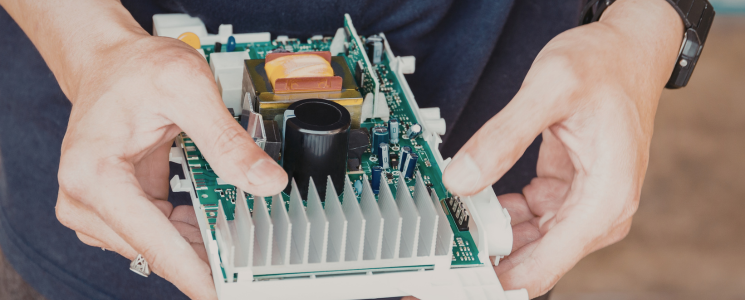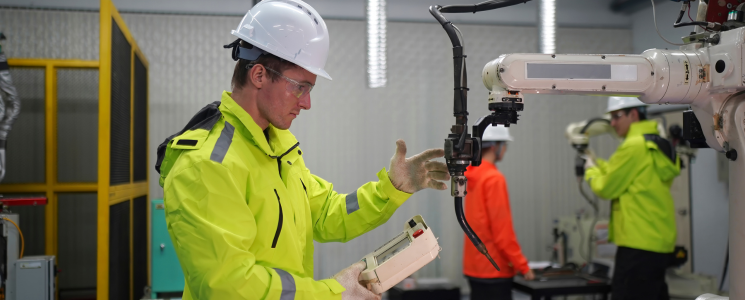In the fast-paced world of electronics manufacturing, efficiency, reliability, and cost-effectiveness are critical for success. One of the most transformative advancements in the industry over the past several decades has been Surface Mount Technology, commonly abbreviated as SMT. Surface Mount Technology components have revolutionized the way printed circuit boards (PCBs) are designed, assembled, and manufactured, offering substantial benefits in terms of cost reduction, production speed, and product quality. For electronics manufacturers, understanding how SMT components contribute to lowering assembly costs is essential for maintaining competitiveness in a market where margins are increasingly tight.
Understanding Surface Mount Technology Components
Surface Mount Technology refers to a method of mounting electronic components directly onto the surface of a PCB, rather than inserting them through pre-drilled holes as in traditional through-hole technology. SMT components are typically smaller, lighter, and more versatile than their through-hole counterparts. Common types of SMT components include resistors, capacitors, diodes, transistors, integrated circuits, and connectors. These components come in standardized sizes and packages, allowing for automated handling during manufacturing.
The shift from through-hole to surface mount has been driven by several factors, including the demand for miniaturized devices, faster production cycles, and higher reliability. SMT components are designed to be compatible with automated assembly processes, enabling high-speed placement on PCBs with precision that is difficult to achieve manually.
Reduction in Material Costs
One of the primary ways SMT components reduce PCB assembly costs is through lower material requirements. SMT components are significantly smaller than traditional through-hole components. This reduction in size translates into less use of raw materials such as metals and plastics. Smaller components require less solder and fewer PCB traces to establish electrical connections, which further reduces material expenditure.
Additionally, SMT components allow for higher component density on a PCB. Manufacturers can fit more functionality into a smaller board footprint, reducing the overall size of the PCB and the amount of substrate material required. This advantage is particularly relevant in industries where space and weight are at a premium, such as aerospace, automotive electronics, and portable consumer devices.
Increased Assembly Efficiency
Another critical factor in cost reduction is the efficiency of the assembly process. SMT components are designed for automated pick-and-place machines that can handle thousands of components per hour with high precision. Automated assembly reduces the reliance on manual labor, which can be both time-consuming and error-prone. Less human intervention means fewer assembly errors, lower labor costs, and a faster turnaround time for production.
Automated soldering techniques, such as reflow soldering, are also compatible with SMT components. In reflow soldering, solder paste is applied to the PCB pads, components are placed, and the entire assembly is heated in a controlled oven to melt the solder and form reliable electrical connections. This process is faster, more consistent, and less labor-intensive than wave soldering used for through-hole components, further reducing manufacturing costs.
Minimization of Defects and Rework
Reducing assembly defects is another way SMT components contribute to cost savings. The precise placement of components using automated machines ensures consistent alignment and solder joints. Fewer defects translate into lower rework and scrap rates. In traditional through-hole assembly, misaligned leads or incomplete solder joints can cause functional failures, necessitating expensive repairs or replacements.
Moreover, SMT components tend to have lower parasitic inductance and capacitance due to their shorter leads and smaller form factor. This characteristic not only improves the electrical performance of the PCB but also reduces the likelihood of performance-related defects, which could otherwise lead to costly product recalls or warranty claims.
Design Flexibility and Layer Reduction
SMT components enable more compact and complex PCB designs. Manufacturers can reduce the number of layers on a PCB because SMT components occupy less space and can be placed on both sides of the board. Fewer layers mean lower material costs for the board substrate and reduced production complexity. Simplifying the PCB design also shortens the assembly process and reduces the potential for errors during fabrication.
In addition, the ability to place components on both sides of the PCB allows designers to optimize board layout for signal integrity and thermal management. Efficient layouts can reduce the need for additional heat sinks or complicated routing, which would otherwise increase production costs.
Inventory and Storage Advantages
SMT components offer cost advantages beyond the assembly line. Their smaller size and standardized packaging reduce storage and inventory costs for manufacturers. High-density component packaging allows companies to stock a large number of parts in a smaller space, decreasing warehouse requirements and associated expenses. Standardization also simplifies procurement and supply chain management, as components from different manufacturers often share compatible packages.
Reduced inventory costs are particularly beneficial in industries with frequent product updates or short product life cycles. Electronics manufacturers can maintain lean inventory levels without compromising production capacity, minimizing the risk of obsolescence or excess stock.
Faster Time-to-Market
Time-to-market is a critical factor in electronics manufacturing, as delays can result in lost revenue and competitive disadvantage. SMT components accelerate the production process by enabling automated assembly, reducing manual handling, and minimizing rework. Faster assembly cycles mean that manufacturers can deliver products more quickly, capitalize on market trends, and respond to customer demands efficiently.
By streamlining the assembly process and improving production predictability, SMT components allow manufacturers to plan production schedules more accurately. This capability reduces the likelihood of costly overtime, expedited shipping, or production bottlenecks, all of which contribute to overall cost savings.
Scalability and High-Volume Production
Surface Mount Technology is highly scalable, making it ideal for high-volume production runs. Automated pick-and-place machines, reflow soldering, and inspection systems can be scaled to meet increasing demand without significant increases in labor or material costs. High-volume production benefits from economies of scale, reducing the per-unit cost of PCBs and associated electronic assemblies.
Scalability also allows manufacturers to optimize production lines for both small batches and mass production. Flexible SMT assembly lines can switch between different product types with minimal downtime, providing cost-effective solutions for diverse manufacturing requirements.
Enhanced Reliability and Reduced Warranty Costs
SMT components offer improved reliability over through-hole components due to their shorter leads, reduced mechanical stress, and consistent solder joints. Enhanced reliability reduces the likelihood of product failures in the field, which in turn lowers warranty claims and service costs. Electronics manufacturers benefit from improved customer satisfaction and reduced post-sale expenses.
Reliable assemblies also minimize the need for extensive testing and quality control interventions. While rigorous testing remains necessary, the inherent reliability of SMT components allows manufacturers to optimize testing protocols, reducing labor and equipment costs associated with inspection.
Integration with Advanced Manufacturing Technologies
Surface Mount Technology components integrate seamlessly with advanced manufacturing technologies such as automated optical inspection, in-circuit testing, and robotics. Automated optical inspection (AOI) machines can quickly detect misaligned or defective components, ensuring high-quality assemblies without excessive manual intervention. In-circuit testing (ICT) allows for rapid functional testing of PCB assemblies, further reducing rework and labor costs.
The compatibility of SMT components with Industry 4.0 technologies also facilitates data-driven manufacturing. Real-time monitoring of production lines, predictive maintenance, and process optimization contribute to cost reductions by minimizing downtime and enhancing operational efficiency.
Case Studies and Industry Examples
Many electronics manufacturers have experienced significant cost savings after transitioning from through-hole to surface mount assembly. For example, in the consumer electronics sector, companies producing smartphones, tablets, and wearable devices rely heavily on SMT components to achieve compact designs and efficient assembly. Reduced PCB size, automated placement, and high-density component layouts enable these manufacturers to lower production costs while maintaining high performance and reliability.
In the automotive electronics industry, SMT components are used in control modules, sensors, and infotainment systems. The ability to place components on both sides of the PCB and use compact packages allows for more sophisticated circuits without increasing board size. Reduced assembly time, fewer defects, and lower material costs contribute to substantial savings, particularly in high-volume production runs.
Industrial electronics manufacturers also benefit from SMT assembly by improving production consistency and reliability. Applications such as programmable logic controllers, motor drives, and power supplies demand robust and reliable electronics. SMT components enable these manufacturers to maintain stringent quality standards while minimizing labor costs and material waste.







